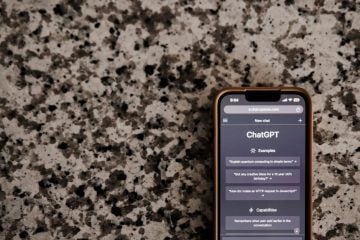Why Prompt Engineering Is Important — And How to Get Started

Prompt engineering might sound like a fancy tech term reserved for AI developers. However, it’s fast becoming an essential skill for anyone who wants to work smarter and make their job more AI resistant.
Whether you’re a freelancer, small business owner or just someone who spends a lot of time fiddling with ChatGPT, knowing how to talk to AI properly can supercharge your productivity and creativity.
The best part? You don’t need to know how to code. You just need to know how to ask better questions. Here are the details.
What Is Prompt Engineering, Really?

Prompt engineering is the practice of crafting clear, effective inputs (prompts) to get the best possible outputs from generative AI tools like ChatGPT, Claude or Midjourney. It’s not about speaking to machines in their language. It’s about training yourself to communicate more deliberately and precisely.
Think of it like giving directions. If you tell a friend, “Drive me somewhere fun,” the outcome is unpredictable. But if you say, “Take me to the nearest beach with good reviews and public bathrooms,” you’re more likely to get what you want. Prompt engineering is about reducing ambiguity, setting clear goals and sometimes even stacking instructions for complex results.
With tools like ChatGPT now being used for resumes, meal plans, business pitches, social media content and more, prompt engineering is turning into the literacy of the digital age. If you know how to prompt properly, you’ll get the desired output faster and earn money with AI more easily.
Make Quick Money Outside of Prompt Engineering
Learning about prompt engineering can give your career or your side hustle a boost. But while you build these skills, there are ways to boost your income as well. These are some of our favorite way to make quick money.
| Offer | What You Can Earn | What You Have to Do | Take Action |
|---|---|---|---|
| InboxDollars | $225/month | Complete short surveys | |
| FreeCash | $1,000/month | Simple online tasks | |
| GoBranded | Up to $140/month | Share your honest opinion | |
| Kashkick | $1,000/month | Try out apps | |
| Solitaire Cash | Up to $83 per win | Compete against other players | |
| Bingo Cash | Up to $83 per win | Compete against other players |
Why It Matters More Than You Think
If you’ve ever been disappointed by an AI response, it’s possible it’s not the tool’s fault. It could be the prompt. AI models are becoming more advanced, but they aren’t mind readers. A vague input will produce generic, boring or off-target results.
Learning how to shape your prompts can save hours of editing, rewriting or starting over. Instead of saying, “Write me a blog post,” you might say, “Write a 700-word blog post in a conversational tone on why remote work improves employee happiness, using stats and a short intro.”
That one change, adding detail, can unlock completely different levels of quality and usefulness. Try it yourself and you’ll see the drastic difference between how much time you spend working on each. If you’re out of inspiration, you can always convey the idea to another LLM in simpler terms and get a better prompt instantly.
And it’s not just about writing. Designers can get more nuanced visual outputs from image generators. Coders can get cleaner, more specific code. Marketers can extract insights from data without wrangling spreadsheets. In a world where AI is everywhere, prompt engineering is the difference between OK and excellent.
How to Start Prompting Like a Pro

The trick to good prompt engineering isn’t memorizing scripts. It’s learning how to guide the AI through context, format, tone and constraints. A good prompt sets expectations.
For example: Instead of: “Summarize this article.” Try: “Summarize this article for a 5th grader, in five short sentences, keeping the tone curious and fun.”
Here are a few techniques that help:
- Role assignment: Ask the AI tool to act like a specific persona (“Act as a hiring manager…” or “Pretend you’re a Michelin-star chef…”). This changes how it frames its responses. If you’re using ChatGPT, make sure you properly use the Memory and Custom Instructions features.
- Constraints: Set limits (“Use no more than 150 words” or “Avoid using jargon”). Be prepared that you’ll have to use another model or chat window to paraphrase your AI prompts into a more digestible form.
- Step-by-step instruction: Break big asks into parts (“First list the pros, then the cons, and then give me a recommendation”).
- Formatting cues: Request a specific structure (“Write in bullet points,” “Give me a table,” or “Include headings”).
Over time, you’ll get a feel for how much context is needed and which tweaks produce better results. The best way to learn? Keep experimenting.
Real-World Uses for Prompt Engineering
You don’t need to be in tech to benefit. Prompt engineering is already revolutionizing how people in everyday jobs get things done.
- Writers and editors use it to generate drafts, headlines, outlines or improve grammar. A prompt like “Rewrite this paragraph to be punchier and remove passive voice” can clean up sloppy text in seconds.
- Customer service reps feed in entire complaint emails and prompt the AI to generate calm, empathetic responses. It can help with tone, de-escalation and clarity.
- Small business owners use prompts to create product descriptions, ad copy, newsletters or even social captions. Instead of paying per piece, they’re learning to iterate faster with AI assistance.
- Students and researchers use AI to summarize sources, brainstorm essay angles or generate study guides. With the right prompt, AI becomes a homework buddy.
- Job seekers craft resumes, cover letters and interview prep material. A prompt like “Rewrite my experience to fit a marketing coordinator role using industry buzzwords” does wonders.
It’s not about replacing your brain, it’s about extending your reach. The best way to go about this is to observe your daily tasks, workflows and responsibilities and diagnose the parts that need automating.
Pitfalls to Avoid (and How to Course-Correct)

Even with great prompts, AI can go off the rails. It might misunderstand tone, give outdated information or hallucinate facts. Here’s how to stay in control:
- Always fact-check. AI models like ChatGPT don’t access the internet in real-time unless you’re using web-enabled versions. Even then, double-check.
- Avoid vague questions. Asking “What should I eat tonight?” is too open. Try “Give me three healthy dinner recipes under 30 minutes using chicken, rice and broccoli.”
- Don’t assume AI knows you. Each session is a fresh slate unless you build a persistent custom GPT or chatbot. Re-establish context each time.
- Limit complexity per prompt. Asking it to write, format, cite sources, translate and analyze tone in one go usually backfires. Break it up.
Prompt engineering is a conversation, not a command, so don’t expect a perfect answer right out of the gate. Ask, evaluate, revise and iterate until you see consistent output. Then, you can move on to further benchmarking and tweaking the prompt. In particular, you should pay attention to structure across your attempts and how the model responds to changes.
Leveling Up: Going Beyond Basics
Once you’re comfortable, you can start chaining prompts together to handle multi-step tasks. Think of it like delegating a project:
- Generate a blog outline
- Have AI write each section
- Ask it to rephrase for clarity
- Add SEO keywords
- Format for publishing
This is called prompt chaining, and it lets you layer complexity without overwhelming the model. You can also build templates that you reuse and refine over time.
For example: “Act as an experienced financial advisor. Explain dollar-cost averaging to a 25-year-old beginner investor, using real-world metaphors and staying under 300 words.”
Save that. Tweak it. Reuse it.
You can even learn to use system messages or advanced tools like GPTs in ChatGPT Pro, where you customize the assistant’s behavior long-term. This is like giving your AI a memory and a job title.
Prompt engineering isn’t static, and as such, it should evolve alongside your workflow and newer versions of GPT, Claude.
Why Prompt Engineering Pays Off

Prompt engineering is more than just a trendy buzzword. It’s your ticket to getting more out of the tools you may already use. And unlike most tech skills, it doesn’t require weeks of training or expensive courses. You just start where you are and get curious.
If you can learn to speak the AI’s language (which really just means being clearer about your own), you gain leverage. You spend less time fiddling and more time finishing. You build faster, write better, think sharper.
In a world run by inputs, those who prompt well will lead. So the next time you open ChatGPT, ask smarter. The future doesn’t wait for generic questions and you certainly won’t have time to revise the output a million times over.
New York contributor Kiara Taylor specializes in financial literacy and financial technology subjects. She is a corporate financial analyst.












